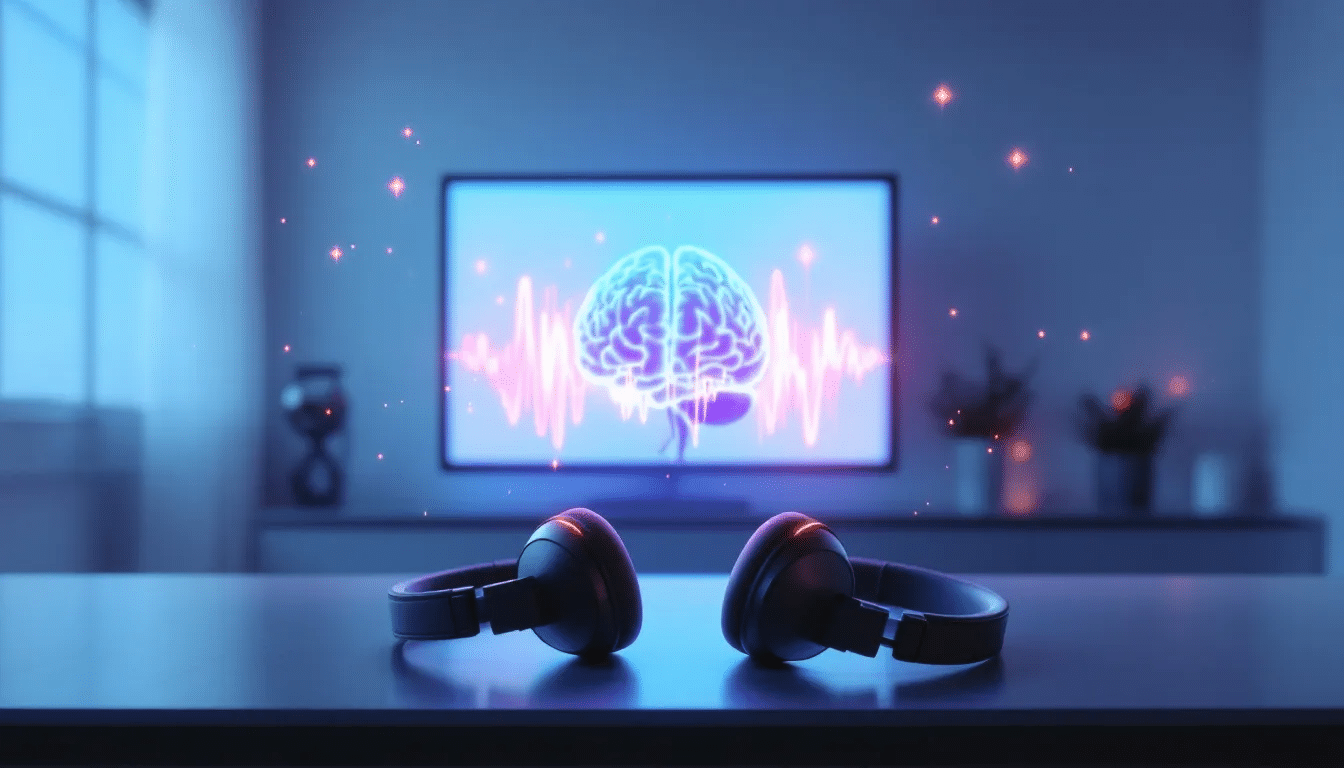Do frequencies work for healing? This article explores the science behind sound frequencies and their potential health effects. Learn about how these frequencies might impact your well-being and how they are used in healing practices.
Understanding Frequency Healing

Sound healing, alternatively referred to as frequency healing, is a therapeutic practice that utilizes sound vibrations for aligning the body’s energy. This method has been valued across generations as an alternative therapy free from pharmaceuticals. The essence of sound healing and its associated practices stems from their ability to impact both mental and physical health without direct physical contact.
The interaction between specific sound frequencies and the human body is a key element in the efficacy of sound healing. These particular frequencies have the power to modulate our levels of stress, emotional wellbeing, and contribute overall towards enhancing how we feel. Sound vibrations at these certain frequencies can trigger biochemical responses that encourage homeostasis—a balance essential for restoration and maintaining wellness.
Engaging with sound healing may activate the vagus nerve—critical to managing bodily relaxation through the parasympathetic nervous system. Stimulating this nerve via auditory means has been recognized for its restorative effects on health by fostering tranquility within one’s experience that augments both psychological well-being and physiological stability.
By tapping into specific frequencies using tools such as tuning forks or singing bowls, frequency healing exploits audio elements designed to promote an optimal setting for recuperation and equilibrium. It stands out by offering a comprehensive route toward preserving healthiness in all aspects of life.
The Science Behind Sound Frequencies
The study of sound frequencies unveils the profound impact that sounds can have on both our physical and mental states. Vibrations from high-frequency sounds are known to affect neuronal behavior, encouraging growth in neural connections and fostering brain wellness. These vibratory effects trigger a variety of mechanoreceptors throughout the body, which then lead to diverse physiological reactions.
At the cellular level, sound vibrations can instigate biochemical activities that influence vital processes such as circulation. When endothelial cells within blood vessels respond to these vibrations, they release signaling molecules like nitric oxide, thereby improving blood flow. Sounds with low frequencies under 250 Hz. Hz engage directly with the nervous system and muscle of our bodies, producing unique physiological responses specific to those auditory stimuli while also uncovering precise mechanisms for how these interactions occur.
Tibetan singing bowls represent an ancient practice in sound healing where friction-induced vibrations produce audible tones when struck or rubbed by hand—yielding a spectrum of frequencies between 110 Hz and 900 Hz contingent upon their size characteristics and mannerisms employed during play. Dr. Glen Rein’s investigative work has Enlightened us about the ways in which human physiology is influenced by acoustic waves emanating from such tools.
There remains a need for more empirical studies regarding solfeggio frequency therapy before making definitive scientific claims about its efficacy—the potential advantages appear considerable but require greater exploration through research to substantiate any health-improving properties fully attributed thus far based largely on anecdotal evidence indicating substantial promise for augmenting personal well-being through targeted use of specific audio waveforms.
Do Frequencies Have Healing Power?

The concept of healing frequencies possessing therapeutic capabilities is both fascinating and complex. Various sound frequencies are utilized in numerous healing modalities to address health issues and enhance well-being. For instance, the ‘Love Frequency’ at a specific 528 Hz frequency is said to foster relaxation, decrease cortisol production, and bolster sleep quality via its harmonizing vibrations.
Additional frequencies like 285 Hz and 417 Hz are available. Hz are believed to support tissue repair, diminish stress levels, and assist in recovering from trauma. These particular sounds have the potential to craft a tranquil atmosphere conducive to the body’s innate restorative mechanisms helping mitigate discomfort. Although research continues to evolve, there are indications that certain sound frequencies may contribute benefits such as easing anxiety symptoms and improving how pain is experienced.
Employed alongside conventional medical approaches as an adjunctive therapy option. Sound healing offers a more comprehensive view of health care. The curative essence of these specific sound waves lies within their capacity for inducing serenity, diminishing tension levels significantly while fostering overall mental stability & bodily recuperation. As continued investigations progress Into this field’s nuances over time we can expect our understanding surrounding utility applications available through acoustic remedies will only deepen even more so moving forward ahead future studies ensue unfolding onward progressively thereafter henceforth indeed verily assuredly forsooth yea truly absolutely indisputably certainly without doubt undoubtedly unquestionably yes definitely sure by all means exactly precisely right exact spot-on bingo nailed it gotcha you betcha yeppers yuppers amen THAT’S RIGHT!
How Sound Frequencies Impact Brain Function
The influence of sound vibrations on brain activity is remarkable, as they can decelerate the pace of brain waves. This results in a tranquil mental state by transitioning from restless to serene wave patterns, profoundly affecting emotional well-being and cognitive performance while boosting focus and sharpness of mind.
By tuning into certain sound frequencies, one can foster a meditative mindset that augments brain function and lucidity of thought. Such frequencies are instrumental in bolstering neuroplasticity, which benefits learning processes and memory consolidation. The act of immersing oneself in these sounds contributes to stress reduction through lowered cortisol production and heightened relaxation.
Ultimately, exposure to specific sound frequencies cultivates an atmosphere conducive to enhancing cerebral functionality by promoting clarity of thought, attentiveness, and overall cognitive vitality. Consequently, utilizing sound healing emerges as an effective strategy for anyone seeking enhancement in their psychological welfare.
The Role of Binaural Beats in Healing

Binaural beats harness an auditory phenomenon to improve well-being through the manipulation of brain wave frequencies. When two distinct tones at slightly varied frequencies are presented separately, one in each ear including the right ear, they produce a perceived third tone known as a binaural beat. This effect has been shown to align brain wave activity and potentially modify mental states, offering a range of psychological advantages. Gaining insight into how binaural beats function can augment the results achieved with this sound healing method.
The impact of binaural beats varies according to their frequency spectrum. Lower-frequency beats encourage relaxation while higher-frequency ones bolster attention and mental sharpness. These tones have demonstrated efficacy in fostering more profound rest and enhancing the quality of sleep.
Engaging regularly with binaural beat therapy may confer potential health benefits such as stress alleviation, augmented mental clarity, and improved overall well-being. Adopting them into your daily routine could heighten concentration levels, diminish stress factors, and promote better sleep—highlighting their significance for maintaining healthy relaxation practices and tapping into other prospective gains for mental welfare.
Tools and Techniques in Frequency Healing

Healing through frequency leverages an array of instruments and methods to tap into the therapeutic potential of sound. The vibrations produced by sound influence how cells operate and exert a comprehensive effect on the activities within our brains, nerves, muscles, and organs. This multi-level impact positions sound as a potent agent for fostering well-being due to its neurological, physiological, and biochemical interactions.
In pursuit of harnessing these healing effects, practices such as employing tuning forks or singing bowls are commonplace in the realm of sonic therapy. These methodologies generate precise frequencies that align with our body’s innate rhythmical patterns leading to tranquility and recuperation. By integrating these strategies regularly one can reinforce their mental clarity alongside physical vitality utilizing this gentle yet effective wellness modality.
Utilitarian implementations span from incorporating meditation-accompanying singing bowls to leveraging energy harmonizing tuning forks or wielding various tools tuned with solfeggio frequencies aimed at profound restoration. Fostering knowledge about such resources equips individuals with the capability to construct an ambience conducive for sustaining peak health conditions without invasive interventions.
Emotional Contagion in Music
The intriguing concept of emotional contagion refers to the transfer of emotions from musicians to their audience through music. This occurs due to our brain’s mirror neuron system, which enables us to empathize with the emotional content being conveyed musically. As a result, listeners frequently absorb and reflect emotions such as joy or sorrow that are embedded in the music they hear, often without conscious awareness of this influence.
Recognizing the difference between perceiving emotion within music and actually experiencing it oneself is key for grasping how emotional contagion works. Theories in psychology about imitation and mimicry shed light on why even abstract instrumental pieces, devoid of words, can provoke strong emotional reactions like sadness or happiness. These experiences underscore just how significantly pure sound alone can shape our psychological states.
By delving into the mechanisms behind emotional contagion, we come to understand more profoundly how intertwined music is with human emotions. Such insight underscores how pivotal musical experience can be in affecting one’s mental health and overall sense of well-being.
Human Performances vs. Digital Recordings
There’s an ongoing debate regarding the benefits of live music versus recorded tracks, yet evidence points to distinctive advantages provided by live performances. Engaging in listening to musicians perform in person has been linked with a more significant reduction in stress levels and elevation of one’s mood compared to its digital counterparts. A study from 2017 published in PLOS ONE revealed that oxytocin levels—known for their role in social connection and easing stress—increased more when participants listened to classical tunes played by living artists rather than computer-generated versions.
When it comes to stirring up our emotions, live music seems to have the upper hand as well. It stimulates parts of the brain responsible for processing feelings, especially targeting the amygdala, which is essential for emotional reactions. The unpredictable nature inherent within a live setting enables performers on stage to tailor their musical delivery instantaneously, enriching spectators’ emotional involvement. More information about use of sound frequency recordings here: https://orchestralmeditations.com/what-people-use-our-music-for/
The presence of human musicians also brings forth personal interpretation and intentional artistic decisions that lend a level of depth and genuineness unmatched by recordings. Such interactions fostered between artistes performing spontaneously before an audience give rise each time they play into experiences distinctively varied depending on that particular act—a sense of authenticity you actually experience while listening—that simply can’t be replicated through pre-recorded formats.
Practical Applications of Frequency Healing

The utilization of sound therapy has been shown to considerably improve both mood and sleep patterns through practical means. Research has demonstrated that certain solfeggio frequencies, most notably 528 Hz, are effective in fostering relaxation and enhancing the quality of sleep, which leads to a more profound state of rest. Among these tones, the best regarded is 432 Hz for its ability to soothe the body and contribute to improved sleep.
The application of binaural beats into everyday life can aid individuals in achieving better concentration as well as diminishing feelings of anxiety. These beats serve as an instrumental resource for promoting tranquility and mental health. Various tools such as smartphone apps have been designed to gauge singing bowl frequencies during sound therapy sessions so users may identify specific sounds being emitted.
In settings like yoga studios or during hypnotherapy meetings and massage treatments, healing through frequency is effectively utilized. Yoga teachers often curate music playlists enhanced with meditative tracks to foster a serene environment while hypnotherapists integrate musical elements with vocal recordings aiming at relieving stress among participants.
Adopting these techniques can help people craft environments conducive to nurturing their general health status and sense of well-being by intertwining different instruments and methodologies within their regular routines.
Safety and Considerations in Frequency Healing
It is imperative to prioritize safety measures in frequency healing, safeguarding the health and wellbeing of individuals. Maintaining sound levels at a comfortable threshold is key to preventing hearing damage during frequency healing sessions. It’s advisable for those with particular health conditions to seek guidance from a healthcare professional before engaging in frequency healing.
It is essential that the practice be carried out in an environment that is both safe and regulated. Adhering to these precautionary steps enables participants to reap the rewards associated with frequency healing while reducing any possible hazards.
Summary
In summary, frequency healing offers a non-invasive and holistic approach to enhancing mental and physical well-being. From understanding the science behind sound frequencies to exploring practical applications and safety considerations, the potential of sound to heal is vast and promising.
As you explore the world of frequency healing, remember to approach it with an open mind and a willingness to experiment with different tools and techniques. The journey toward healing and balance is unique for everyone, and sound frequencies provide a harmonious path to well-being.
Frequently Asked Questions
What is emotional contagion in music?
Emotional contagion in music refers to the ability of musicians to transmit their emotions to listeners, facilitated by our brain’s mirror neuron system.
This process allows audiences to feel the same emotions as the performers, creating a powerful shared experience.
What unique qualities do human performances bring to music?
Human performances impart intentions, interpretations, and artistic choices that enrich the music, fostering a deeper connection between listeners and the artist’s creative vision.
This unique emotional engagement is what ultimately distinguishes live performances from recorded music.
How do human musicians enhance the expressiveness of music?
Musicians bring a depth of emotion to their music, employing nuanced variations and improvisation that enrich their performances with expressiveness.
What flexibility do human musicians have during performances?
Musicians have the ability to alter timing, adjust tempo, and vary rhythm as they perform. This enables them to react to both the ambiance of their setting and the feedback from their audience, thus expressing their creativity.
Such flexibility improves not just the performance itself, but also enriches the experience for everyone involved—those who are performing and those who are listening.
What did the 2017 study published in PLOS ONE find regarding live music?
The 2017 study published in PLOS ONE found that live classical music significantly increased oxytocin levels, enhancing social bonding and reducing stress more than recorded music.
This highlights the unique benefits of experiencing music in person.



